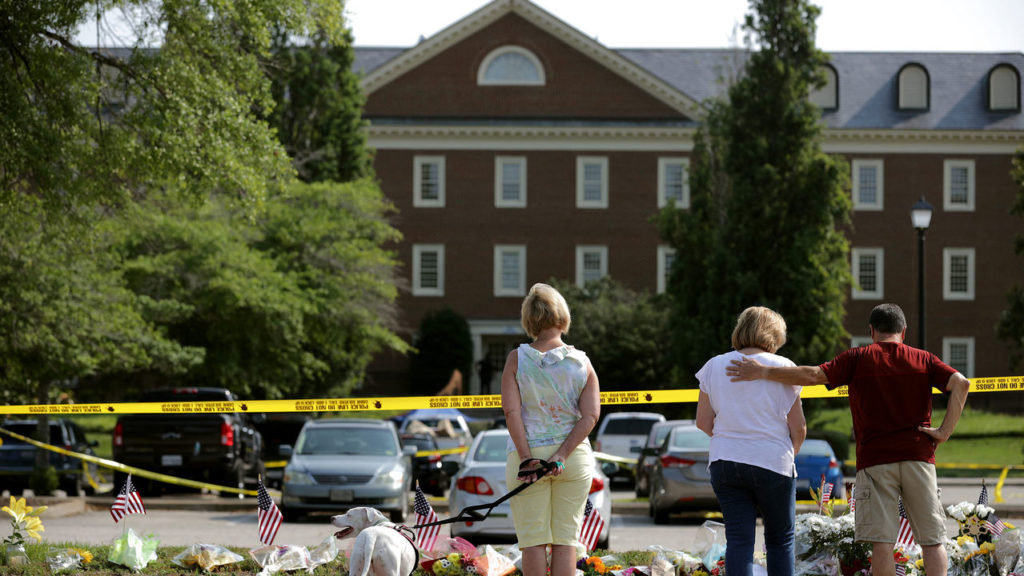
Two long-awaited reports were released to the public this week that could have helped further the dialog regarding guns in the Commonwealth of Virginia: The Virginia State Crime Commission report regarding Mass Killings and Gun Violence, and the Hillard Heintze Independent Review of the May 2019 Virginia Beach killings.
For those who haven’t been following events in Virginia, the killings in a Virginia Beach City government building in May 2019 ostensibly led the Governor, at that time embroiled in scandal, to call for a special session of the General Assembly to consider a raft of “gun violence” bills.
Although the Governor conceded that none of the bills would have stopped the Virginia Beach killer, he and Democrat legislators marched in lockstep with the Bloomberg-sponsored confiscation agenda, asserting that reducing access to lethal firearms was urgently needed.
Rather than hastily vote on the bills, the then Republican-controlled Assembly moved consideration of the bills to the Crime Commission. The Commission took two days of testimony and reviewed thousands of emails before issuing its report earlier this week.
It was no surprise that Crime Commission’s report concluded with the equivocation that “inconclusive evidence exists to develop recommendations.” The Assembly then flipped from Republican control (generally pro-Second Amendment) to Bloomberg-financed Democrats (“we support the Second Amendment but . . .”), the Commission’s recommendations were neither binding nor likely to carry weight in future deliberations.
Nonetheless the report did provide insight into how the legislators think about crime or, in Virginia’s case actually, the relative lack thereof. The report in part read:
“Our Commonwealth is one of the safest states in the nation. Our firearm mortality rate is below the national average. We have the fourth lowest violent crime rate in the country. And as Governor Northam proudly pointed out in a January press release, Virginia also has the lowest recidivism rate in the country. We have achieved this because of our brave men and women in law enforcement, a strong criminal justice system, and by enacting sound, evidenced-based public policy through thoughtful legislative dialogue.”
Note the absence of any reference to concealed carry permit holders. Although the points referenced are valid, how can over 600,000 responsible, armed citizens get overlooked? Was that a deliberate omission, or did the Crime Commission not comprehend testimony by Amy Swearer (of the Heritage Foundation) about the vast numbers of defensive gun usages?
In some ways, the review of the Virginia Beach killings was even more perplexing. The section titled “Weapons” obfuscated the legality of guns in the building where the killings occurred. It acknowledged that employees were prohibited from carrying guns even if they could lawfully carry elsewhere, but omitted the fact that citizens and visitors were not prohibited from carrying guns. In other words, it was a “gun-free zone” for employees only. That section of the report continued:
“The attacker left Building 2 and retrieved his weapons from his parked vehicle on government property. He then shot two people in the parking lot and reentered the building and shot many of his coworkers. The City of Virginia Beach has a firearms policy that prohibits the possession of firearms in the workplace. The attacker’s actions are one reason why such policies exist, as they are intended to reduce the risk of such attacks. Some employees suggested, however, that had they been allowed to have weapons in the workplace, they might have been able to limit the harm done in the attack.
“Many employers ban weapons in the workplace as a risk factor for violence. Some employers and employees believe that the availability of armed defense would limit such attacks. Notwithstanding this difference of opinion, it is a known correlation that most of the mass casualties in the workplace are caused by firearms.”
I cannot help but infer bias against armed employees in the preceding passages. Not only is there excellent data that supports the ability of armed citizens in stopping active shooter attacks, this analysis doesn’t consider the deterrence effect of people carrying guns. Would the killer have attempted his attack if he thought his potential victims might be armed? Again, research supports the finding that criminals fear armed potential victims more than law enforcement officers.
Finally, it isn’t linguistic quibbling to point out that casualties aren’t caused by firearms: casualties are caused by human beings. The report’s usage confirms its hoplophobic bias.
Bias against lawfully, responsibly armed citizens is even more difficult to understand given the report’s conclusion that the killer’s actions leading up to the murders would not have led to identifying him as at risk of committing such an atrocity. Even the suggested human resource changes instituting an elaborate threat assessment team and protocol would not have mattered.
Although the rapid response of the police was commendable, the attack still went on for over thirty minutes. Given that concealed carry permit holders are less likely to commit offenses than law enforcement officers, it is wrong to support that “gun free zone for employees” policy.
At some point, reality needs to be acknowledged: despite everyone’s best efforts, evil occurs. Gun free zones needlessly endanger the lives of those who have no choice but to frequent them.
Although some of the report’s recommendations would be prudent additional safeguards, we would all be safer recognizing that responsible, lawfully armed citizens have the God-given right to defend themselves. We ignore this at our peril.
.
.

–Dennis Petrocelli, MD is a clinical and forensic psychiatrist who has practiced for nearly 20 years in Virginia. He took up shooting in 2019 for mind-body training and self-defense, and is joining the fight for Virginians’ gun rights.
